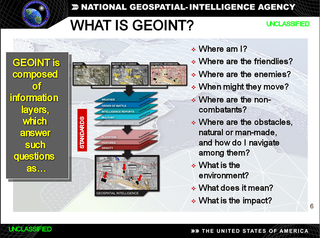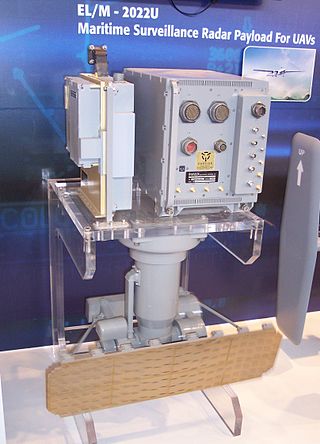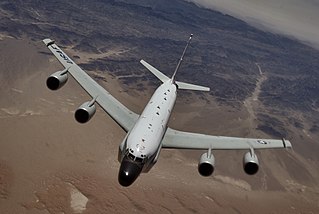This article needs additional citations for verification .(April 2019) |
This is a list of intelligence gathering disciplines.
This article needs additional citations for verification .(April 2019) |
This is a list of intelligence gathering disciplines.
Human intelligence (HUMINT) are gathered from a person in the location in question. Sources can include the following:
MI6 is often thought to use human intelligence to operate in different countries or Britain itself to protect the country from global affairs. However, this is usually confused with their brother agency MI5, which focuses on the security of Britain.[ citation needed ] [1]
Cyber intelligence (CYBINT), sometimes called "digital network intelligence (DNINT)", are gathered from cyberspace. CYBINT can be considered as a subset of OSINT. [2]
Financial intelligence (FININT) are gathered from analysis of monetary transactions.
Market intelligence, MARKINT is an intelligence gathering discipline used by the United States Intelligence Community (IC) that focuses on intelligence gathered from the global capital markets. It is analogous to other “INTs” in the IC’s domain, such as SIGINT (signals intelligence), ELINT (electronic intelligence) of (signals Intelligence), MASINT (measurement and signature intelligence), IMINT (imagery intelligence) and HUMINT (human intelligence). It is complementary to but different from FININT (financial intelligence), in which information about the financial affairs of entities of interest is gathered.
Within the IC, MARKINT is defined as, “the systematic collection and analysis of confidential and open-source information from the global capital and commodities markets in order to derive actionable intelligence from the activities of market participants”.
MARKINT is different from the traditional definition of Market Intelligence or Marketing Intelligence, in which information is gathered for purposes of enhancing commercial marketing efforts rather than for purposes of analysis relating to national security. [3]
Geospatial intelligence (GEOINT) are gathered from satellite and aerial photography, or mapping/terrain data.
Measurement and signature intelligence (MASINT) are gathered from an array of signatures (distinctive characteristics) of fixed or dynamic target sources. According to the Air Force Institute of Technology's Center for MASINT Studies and Research, MASINT is split into six major disciplines: electro-optical, nuclear, radar, geophysical, materials, and radiofrequency. [4]
Open-source intelligence (OSINT) are gathered from open sources. OSINT can be further segmented by the source type: Internet/General, Scientific/Technical, and various HUMINT specialties, e.g. trade shows, association meetings, and interviews.
Signals intelligence (SIGINT) are gathered from interception of signals.
Technical intelligence (TECHINT) are gathered from analysis of weapons and equipment used by the armed forces of foreign nations, or environmental conditions.

Signals intelligence (SIGINT) is the act and field of intelligence-gathering by interception of signals, whether communications between people or from electronic signals not directly used in communication. Signals intelligence is a subset of intelligence collection management. As classified and sensitive information is usually encrypted, signals intelligence may necessarily involve cryptanalysis. Traffic analysis—the study of who is signaling to whom and in what quantity—is also used to integrate information, and it may complement cryptanalysis.

In military telecommunications, electronic support (ES) or electronic support measures (ESM) gather intelligence through passive "listening" to electromagnetic radiations of military interest. They are an aspect of electronic warfare involving actions taken under direct control of an operational commander to detect, intercept, identify, locate, record, and/or analyze sources of radiated electromagnetic energy for the purposes of immediate threat recognition or longer-term operational planning. Thus, electronic support provides a source of information required for decisions involving electronic protection (EP), electronic attack (EA), avoidance, targeting, and other tactical employment of forces. Electronic support data can be used to produce signals intelligence (SIGINT), communications intelligence (COMINT) and electronics intelligence (ELINT).
Foreign instrumentation signals intelligence, FISINT (Foreign Instrumentation Signature INTelligence) is intelligence from the interception of foreign electromagnetic emissions associated with the testing and operational deployment of foreign aerospace, surface, and subsurface systems. Since it deals with signals that have communicational content, it is a subset of Communications Intelligence (COMINT), which, in turn, is a subset of SIGINT. Unlike general COMINT signals, the content of FISINT signals is not in regular human language, but rather in machine to machine (instrumentation) language or in a combination of regular human language and instrumentation language. FISINT is also considered as a subset of MASINT (measurement and signature intelligence).
Measurement and signature intelligence (MASINT) is a technical branch of intelligence gathering, which serves to detect, track, identify or describe the distinctive characteristics (signatures) of fixed or dynamic target sources. This often includes radar intelligence, acoustic intelligence, nuclear intelligence, and chemical and biological intelligence. MASINT is defined as scientific and technical intelligence derived from the analysis of data obtained from sensing instruments for the purpose of identifying any distinctive features associated with the source, emitter or sender, to facilitate the latter's measurement and identification.
An intelligence officer is a person employed by an organization to collect, compile or analyze information which is of use to that organization. The word of officer is a working title, not a rank, used in the same way a "police officer" can also be a sergeant, or in the military, in which non-commissioned personnel may serve as intelligence officers.

Sensitive compartmented information (SCI) is a type of United States classified information concerning or derived from sensitive intelligence sources, methods, or analytical processes. All SCI must be handled within formal access control systems established by the Director of National Intelligence.

In the United States, geospatial intelligence (GEOINT) is intelligence about the human activity on Earth derived from the exploitation and analysis of imagery, signals, or signatures with geospatial information. GEOINT describes, assesses, and visually depicts physical features and geographically referenced activities on the Earth. GEOINT, as defined in US Code, consists of imagery, imagery intelligence (IMINT) and geospatial information.

ELTA Systems Ltd (ELTA) is an Israeli provider of defense products and services specializing in radar, ELINT, COMINT, C4ISTAR, Electronic Warfare, Communication, Autonomous Ground Systems, Intelligence and Cyber products.
National technical means of verification (NTM) are monitoring techniques, such as satellite photography, used to verify adherence to international treaties. The phrase first appeared, but was not detailed, in the Strategic Arms Limitation Treaty (SALT) between the US and USSR. At first, the phrase reflected a concern that the "Soviet Union could be particularly disturbed by public recognition of this capability [satellite photography]...which it has veiled.". In modern usage, the term covers a variety of monitoring technologies, including others used at the time of SALT I.
Radiofrequency MASINT is one of the six major disciplines generally accepted to make up the field of Measurement and Signature Intelligence (MASINT), with due regard that the MASINT subdisciplines may overlap, and MASINT, in turn, is complementary to more traditional intelligence collection and analysis disciplines such as SIGINT and IMINT. MASINT encompasses intelligence gathering activities that bring together disparate elements that do not fit within the definitions of Signals Intelligence (SIGINT), Imagery Intelligence (IMINT), or Human Intelligence (HUMINT).
Materials MASINT is one of the six major disciplines generally accepted to make up the field of Measurement and Signature Intelligence (MASINT), with due regard that the MASINT subdisciplines may overlap, and MASINT, in turn, is complementary to more traditional intelligence collection and analysis disciplines such as SIGINT and IMINT. MASINT encompasses intelligence gathering activities that bring together disparate elements that do not fit within the definitions of Signals Intelligence (SIGINT), Imagery Intelligence (IMINT), or Human Intelligence (HUMINT).
Nuclear MASINT is one of the six major subdisciplines generally accepted to make up Measurement and Signature Intelligence (MASINT), which covers measurement and characterization of information derived from nuclear radiation and other physical phenomena associated with nuclear weapons, reactors, processes, materials, devices, and facilities. Nuclear monitoring can be done remotely or during onsite inspections of nuclear facilities. Data exploitation results in characterization of nuclear weapons, reactors, and materials. A number of systems detect and monitor the world for nuclear explosions, as well as nuclear materials production.
Radar MASINT is a subdiscipline of measurement and signature intelligence (MASINT) and refers to intelligence gathering activities that bring together disparate elements that do not fit within the definitions of signals intelligence (SIGINT), imagery intelligence (IMINT), or human intelligence (HUMINT).
Electro-optical MASINT is a subdiscipline of Measurement and Signature Intelligence, (MASINT) and refers to intelligence gathering activities which bring together disparate elements that do not fit within the definitions of Signals Intelligence (SIGINT), Imagery Intelligence (IMINT), or Human Intelligence (HUMINT).

Signals intelligence operational platforms are employed by nations to collect signals intelligence, which is intelligence-gathering by interception of signals, whether between people or between machines, or mixtures of the two. As sensitive information is often encrypted, signals intelligence often involves the use of cryptanalysis. However, traffic analysis—the study of who is signalling whom and in what quantity—can often produce valuable information, even when the messages themselves cannot be decrypted.
Intelligence collection management is the process of managing and organizing the collection of intelligence from various sources. The collection department of an intelligence organization may attempt basic validation of what it collects, but is not supposed to analyze its significance. There is debate in U.S. intelligence community on the difference between validation and analysis, where the National Security Agency may try to interpret information when such interpretation is the job of another agency.
Failure in the intelligence cycle or intelligence failure, is the outcome of the inadequacies within the intelligence cycle. The intelligence cycle itself consists of six steps that are constantly in motion: requirements, collection, processing and exploitation, analysis and production, dissemination and consumption, and feedback.
After the end of World War II, all the Western allies began a rapid drawdown of military forces, including those of signals intelligence. At the time, the US still had a COMINT organization split between the Army and Navy. A 1946 plan listed Russia, China, and a [redacted] country as high-priority targets.
Market intelligence (MARKINT) is an intelligence-gathering discipline that focuses on intelligence gathered from the global capital markets. It is analogous to other "INTs" in the IC's domain, such as SIGINT, ELINT, MASINT, IMINT, and HUMINT. It is complementary to but different from FININT, in which information about the financial affairs of entities of interest is gathered.
All-source intelligence is a term used to describe intelligence organizations, intelligence analysts, or intelligence products that are based on all available sources of intelligence collection information.